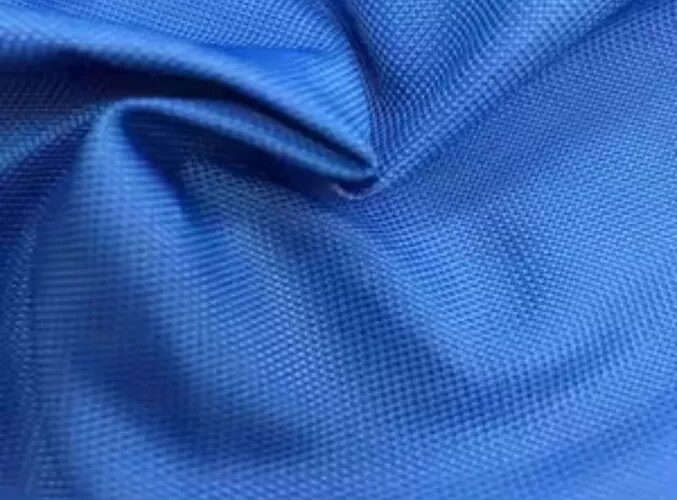Polymer, a widely used synthetic fabric, is affordable and flexible, making it the preferred choice for many consumers.
Fashion Bandung provides detailed information about polymer fabric, including its pros, cons, and applications.
What is polymer fabric?
Polymer fabric is a specific type of fabric that is created using synthetic polymer fibers. Polymers, in this context, refer to large molecules that are composed of repeating units called monomers. These monomers are bonded together chemically to create long chains, which ultimately form the structure of the polymer fabric.
Polymer fabrics are produced by utilizing polymer fibers made from various types of polymers, including polyethylene terephthalate (PET), nylon, polypropylene (PP), polyethylene (PE), among others. These fibers are then crafted into textiles through the process of weaving or other manufacturing techniques. The resulting fabrics are subsequently used to create a wide range of products, such as clothing, bags, and various materials.
Polymer fabrics are widely utilized due to their numerous advantageous properties. These fabrics possess high durability, water resistance, abrasion resistance, and are easy to maintain. Another advantage is that they are often more economical to manufacture compared to natural fabrics. Nevertheless, if polymer fabrics are not properly disposed of after use, they can lead to environmental issues.
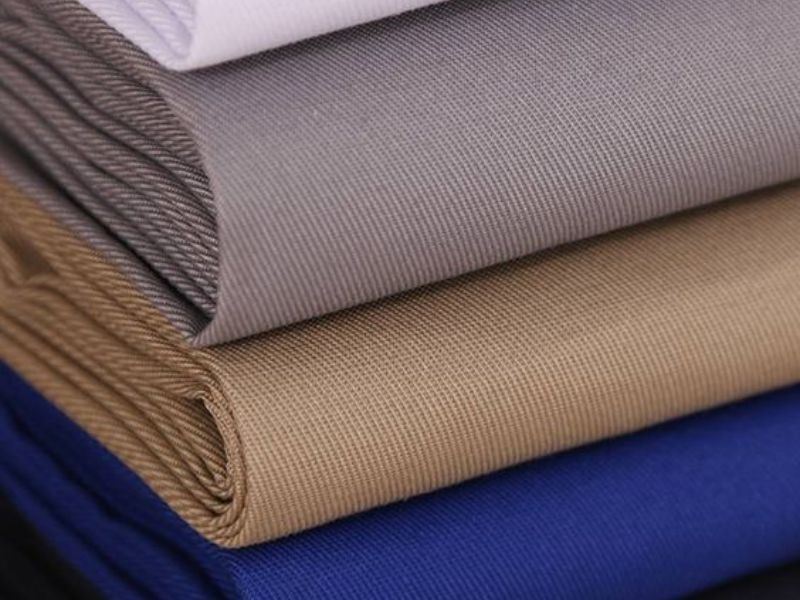
Polymer fabric refers to a type of material that is made from polymers, which are large molecules composed of repeating subunits. These subunits are joined together through chemical processes to form long chains. This fabric is created by weaving or knitting these polymer chains together to create a flexible, durable, and versatile textile. Polymer fabric can be found in various forms, such as polyester, nylon, acrylic, and spandex, each with its own unique properties and applications. It is commonly used in the textile industry for making clothing, upholstery, household items, and industrial products. Due to its synthetic nature, polymer fabric offers advantages such as strength, resistance to stretching, moisture-wicking abilities, and ease of care. This type of fabric has become widely popular due to its affordability, wide availability, and ability to mimic natural materials.
What are the properties of polymer fabrics?
Advantage
Polymer fabrics possess several key properties that differentiate them from other types of fabrics. These properties include:
- Durable: Polymer fabrics are generally durable, especially when made from polymers like polyester (PET) or nylon. This means they can withstand the stress and wear of everyday use.
- Waterproof and antibacterial: Some kind of polymer fabric are naturally water resistant or can be surface treated to improve water resistance.
- Easy care: Polymer fabrics are generally easy to care for because they can be washed and cleaned easily. Some polymer fabrics are wrinkle-free and do not require ironing, saving you time and effort in care.
- Light: Some polymer fabrics such as polyester are lightweight and breathable, helping the wearer feel comfortable in hot and humid environments.
- Variety in colors and designs: Polymer fabrics can be produced in a wide range of colors and designs, from subtle hues to vibrant patterns, to meet the diverse needs of consumers.
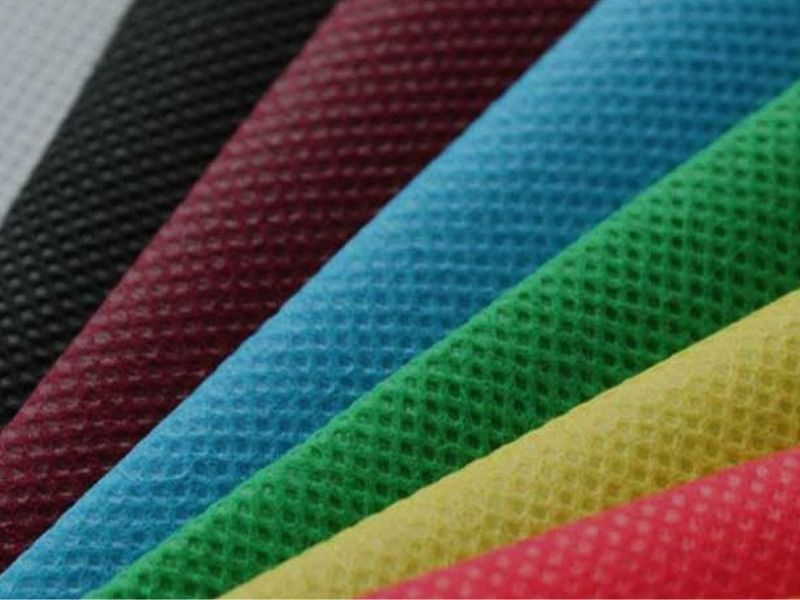
Polymer fabric is known for its remarkable durability and low maintenance requirements. It is designed to withstand wear and tear, making it highly resistant to damage and prolonged use. Moreover, caring for polymer fabric is exceptionally easy, as it does not require any complex cleaning or special attention. This makes it a practical choice for individuals seeking a long-lasting and hassle-free fabric option.
Defect
Although polymer fabric has many advantages, it also has some disadvantages.
- Heat absorption capacity: Some polymer fabrics can absorb and retain heat better than natural fabrics such as cotton or linen. This can make the wearer feel hot and uncomfortable in tropical environments or during strenuous activities.
- Flammable: Some polymer fabrics can burn easily and rapidly if exposed to a flame. This creates a fire hazard in high fire hazard environments.
- Potential for animal and bacterial residues: Some polymer fabrics can easily attract dirt and can become an ideal breeding ground for bacteria and small animals such as lice. This can cause hygiene and health problems if not properly cared for and cleaned.
- Environmental impact: Polymer fabric production can sometimes have negative environmental impacts, including the use of non-recycled plasticizers and the production process can generate toxic waste.
- Fabric surface limitations: With a surface that is often shiny and bright, Nylon fabric does not have the smooth feel of other materials, and therefore does not create a luxurious feeling when used in fashion.
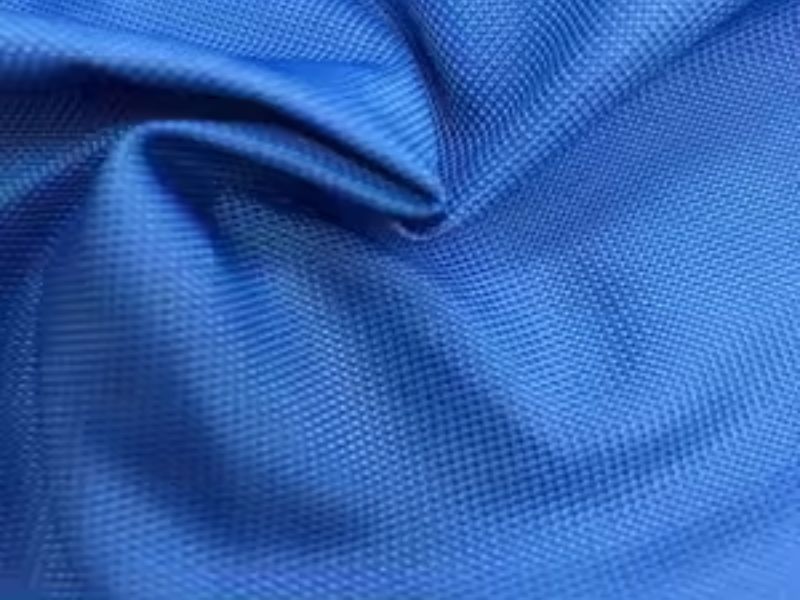
Polymer fabrics possess numerous advantages when compared to other types of fabrics.
Are polymer fabrics hot?
Certain polymer fabrics, including polyester and nylon, have a higher heat retention ability compared to natural fabrics like cotton. This is due to their relatively thick texture and limited absorbency. As a result, wearing polymer clothing, particularly in the summer, can cause discomfort and heat retention. Hence, it is advisable to minimize the use of polymer clothing in tropical conditions.
Furthermore, it is advisable to avoid wearing garments made of polymer fabric while engaging in sports activities and perspiring heavily. To address this issue, manufacturers can incorporate cotton fibers during the production process to enhance the fabric’s ability to absorb moisture. This blend of materials will promote better airflow, resulting in cooler and more comfortable attire for the wearer.
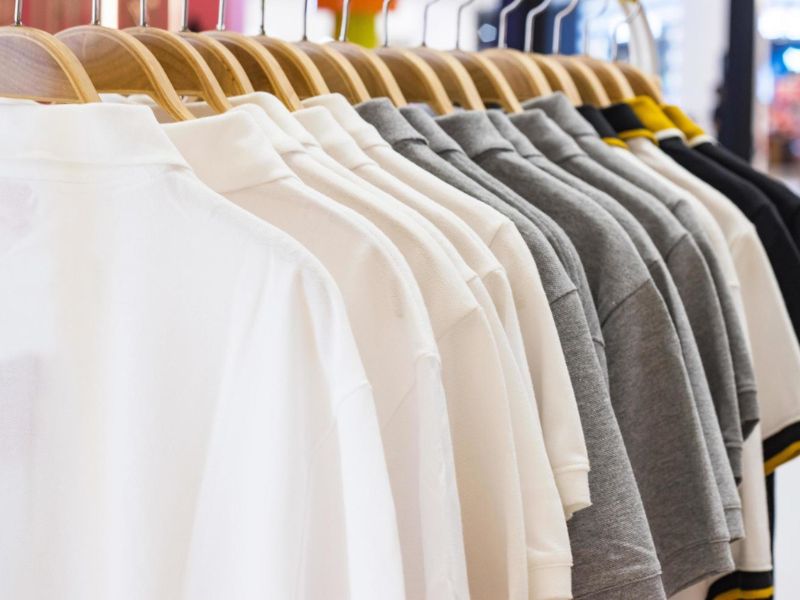
Polymer fabrics have the tendency to generate heat, resulting in a hot sensation when worn on the body.
Polymer fabrics are used in various applications in daily life, such as clothing, upholstery, and vehicle interiors.
Polymer fabrics, which refer to fabrics made from polymers, are extensively utilized in various aspects of daily life due to their versatile properties. These fabrics find application in numerous fields and industries, including:
1. Clothing and apparel: Polymer fabrics are commonly used in the textile industry to manufacture clothing and apparel. They offer a wide range of options in terms of texture, durability, and comfort. Polyester, nylon, and spandex are examples of commonly used polymer fabrics in clothing.
2. Home furnishings: Polymer fabrics are also popularly employed in home furnishings. They are utilized in the production of curtains, upholstery materials, carpets, and bedding items. The ability of polymer fabrics to resist stains, retain color, and maintain shape makes them desirable for these applications.
3. Industrial uses: Polymer fabrics are widely used in various industrial sectors. They are utilized in the production of safety gear, such as protective clothing for workers in hazardous environments. Additionally, polymer fabrics are utilized in the construction industry for applications like roofing materials, insulation, and waterproofing.
4. Medical and healthcare: Polymer fabrics play a crucial role in the medical field. They are used in the production of surgical gowns, drapes, and protective covers for medical equipment. Polymer fabrics are often chosen for their non-allergenic and sterile properties that make them suitable for use in healthcare settings.
5. Sports and outdoor equipment: Polymer fabrics are extensively utilized in the production of sports and outdoor equipment. They are used to manufacture tents, backpacks, sportswear, and shoes. Polymer fabrics offer attributes like breathability, moisture-wicking, and durability, enhancing the performance and comfort of such products.
6. Automotive industry: Polymer fabrics have found their way into the automotive industry as well. They are used for upholstery, seat covers, and interior trims due to their resistance to wear, tear, and fading. Polymer fabrics also contribute to improved heat insulation and soundproofing in vehicles.
7. Filtration systems: Polymer fabrics are employed in filtration systems due to their porous structure and ability to trap particles and impurities. They are used in processes like water purification, air filtration, and industrial filtration applications.
These are just a few examples of the wide-ranging applications of polymer fabrics. With their versatility, durability, and functional properties, these fabrics continue to play a significant role in various aspects of our daily lives.
Clothing and Apparel
Polymer materials are frequently utilized in the manufacturing of various fashion clothing items, including men’s windbreakers, men’s sports shorts, and many other types of garments. The adaptability and versatility of polymer fibers enable a broad spectrum of designs and styles to cater to the diverse preferences of customers. Moreover, this material is also employed in the production of raincoats.
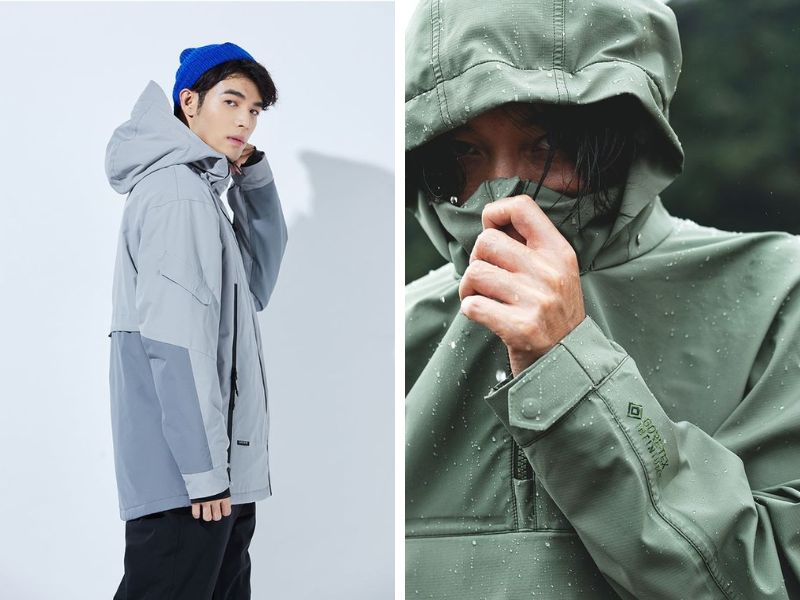
Polymer fabrics have found various applications in the fashion industry. These materials, formed from long chains of polymers, offer a wide range of benefits such as durability, flexibility, and versatility. In the realm of fashion, polymer fabrics are used in the creation of clothing, accessories, and footwear.
One prominent use of polymer fabrics in fashion is the manufacturing of clothing items. These fabrics provide designers with the opportunity to create garments that are not only aesthetically pleasing but also functionally efficient. Polymer fabrics can be engineered to possess specific properties such as water resistance, elasticity, and breathability, making them suitable for a diverse range of clothing styles and purposes. From lightweight and breathable synthetic fibers used for activewear to durable and weather-resistant materials for outdoor apparel, polymer fabrics have revolutionized the production of fashionable and functional clothing.
Moreover, polymer fabrics are also extensively used in the creation of fashionable accessories. Handbags, backpacks, wallets, and belts are just a few examples of accessories that benefit from the properties of polymer fabrics. These materials can be molded, shaped, and printed upon, providing endless possibilities for unique designs and patterns. Additionally, polymer fabrics can be treated to enhance their durability, making them ideal for accessories that undergo frequent use and wear.
In addition to clothing and accessories, polymer fabrics play a crucial role in the world of footwear fashion. Sneakers, sandals, boots, and other types of footwear utilize polymer fabrics for their upper and lining materials. These fabrics offer comfort, support, and breathability, ensuring a pleasant wearing experience for consumers. Moreover, polymer fabrics can be combined with other materials such as leather, mesh, or rubber to create innovative and stylish shoe designs.
Overall, the wide range of properties and versatility of polymer fabrics has revolutionized the fashion industry. These materials have allowed designers to create clothing, accessories, and footwear that not only meet consumers’ fashion preferences but also provide functionality, durability, and comfort. With ongoing advancements in material engineering, polymer fabrics continue to shape the future of fashion.
Bags and backpacks
Polymer fabrics are highly sought after for the manufacturing of bags, backpacks, and various accessories due to their exceptional durability and water-resistant qualities. These properties ensure that the contents of these products remain protected from moisture and potential damage. Unlike other fabrics, which often suffer from issues such as wrinkling and puckering, items made from polymer fabrics have effectively solved this problem. Regardless of the level of use or frequency of washing, the surface of the product will remain wrinkle-free and free from any unsightly puckering, allowing it to maintain a sophisticated and well-maintained appearance.

Polymer fabrics have found extensive applications in the manufacturing of handbags and backpacks. These versatile materials offer various advantages such as durability, strength, and flexibility.
In the production of handbags, polymer fabrics are commonly used to create the outer shell or the main body of the bag. Their robust nature ensures that the bag can withstand daily wear and tear, making it long-lasting. Additionally, polymer fabrics are resistant to moisture, making them suitable for handbags that may be exposed to rainy or humid conditions.
The flexibility of polymer fabrics allows designers to create various shapes, sizes, and styles of handbags. They can be molded or cut into different forms, enabling the production of bags with unique designs and structures. Moreover, the lightweight nature of polymer fabrics adds to the overall comfort of carrying the handbag.
When it comes to backpacks, polymer fabrics are often utilized for both the exterior and the lining of the bag. Their strength and resilience make them ideal for backpacks that carry heavy loads, such as textbooks or travel essentials. Additionally, their water-resistant properties help protect the contents of the backpack from rain or accidental spills.
Furthermore, polymer fabrics offer additional features that enhance the functionality of handbags and backpacks. They can be treated with coatings or finishes to provide additional protection against stains or abrasions. Some polymer fabrics also have UV-resistant properties, preventing color fading and damage from prolonged exposure to sunlight.
Overall, polymer fabrics have revolutionized the production of handbags and backpacks by combining durability, flexibility, and functionality. Their versatility allows designers to create aesthetically pleasing and functional bags that meet the diverse needs and preferences of consumers.
Furniture
Polymer fabric is extensively utilized in the furniture industry, specifically for sofas, chairs, curtains, and sunshades. This is mainly due to its exceptional resistance to dirt and ease of cleaning. However, the application of polymer fabrics expands beyond the fashion industry, as they are widely employed in the production of various household items. These include bed sheets, tablecloths, curtains, and other interior decoration products. The durability and water resistance of polymer fabric have contributed to their popularity in enhancing and safeguarding living spaces.
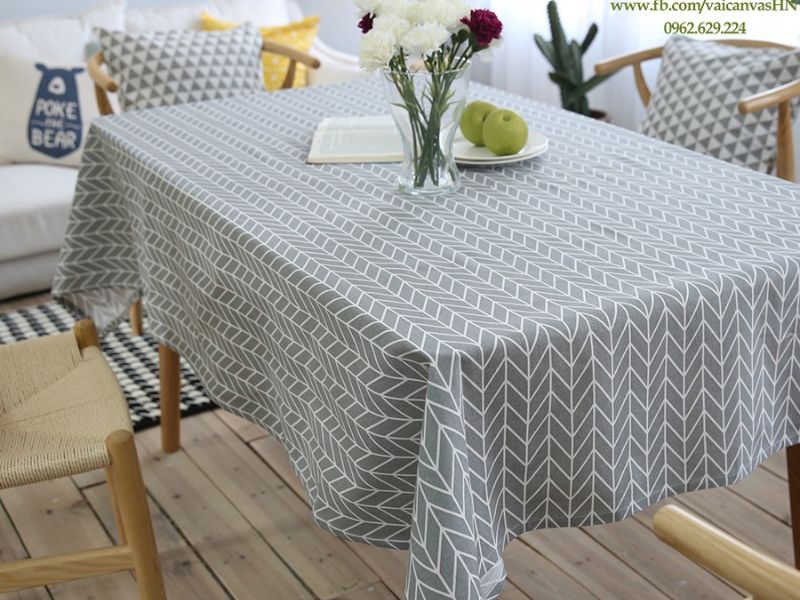
Polymer fabrics have found numerous applications in the manufacturing of furniture. These fabrics, made from synthetic polymers, offer several advantages over traditional materials such as cotton or leather.
One major application of polymer fabrics in furniture manufacturing is upholstery. These fabrics are used to cover sofas, chairs, and other seating furniture to provide comfort and aesthetic appeal. The durability of polymer fabrics makes them resistant to wear and tear, ensuring that the furniture remains in good condition for a longer period of time.
Polymer fabrics are also used in the production of cushions and pillows. The softness and flexibility of these fabrics make them ideal for providing comfort and support. They can be easily molded and shaped to fit different furniture designs, enhancing the overall comfort and aesthetics of the furniture.
In addition to upholstery and cushions, polymer fabrics are also used in the construction of furniture frames. These fabrics can be reinforced with fibers or other materials to provide strength and stability. This allows furniture manufacturers to create lightweight yet sturdy frames, making the furniture easier to transport and assemble.
Another application of polymer fabrics in furniture manufacturing is in the production of outdoor furniture. These fabrics are resistant to moisture, UV radiation, and other weather elements, making them suitable for outdoor use. They can withstand exposure to sunlight and rain without fading or deteriorating, ensuring that the furniture retains its functionality and appearance.
Overall, the applications of polymer fabrics in furniture manufacturing are diverse and varied. They offer durability, flexibility, and resistance to various environmental conditions, making them a popular choice for both indoor and outdoor furniture production.
Sports & Outdoors
Polymer fabrics have revolutionized the sports and outdoor wear industry by introducing remarkable properties such as resistance to wrinkles and water. These fabrics, including spandex, polyester, and nylon, are widely utilized in the production of various garments and men’s sportswear, offering outstanding flexibility, breathability, and water resistance. Additionally, the versatility of polymer fabrics is evident in a range of products, from sun protection jackets to travel backpacks and camping umbrellas, providing users with reliable protection in any weather condition.

Polymer fabrics have found numerous applications in the manufacturing of outdoor gear. The versatility and durability of these fabrics make them ideal for various outdoor activities and environments.
One common application is in the production of outdoor clothing. Polymer fabrics such as nylon and polyester are used to create lightweight, breathable, and water-resistant jackets, pants, and shirts. These fabrics offer protection against wind, rain, and other weather elements, allowing outdoor enthusiasts to stay comfortable and dry during their adventures.
Polymer fabrics are also widely used in the manufacturing of outdoor footwear. They provide excellent tensile strength and abrasion resistance, making them suitable for hiking boots, running shoes, and sandals. These fabrics can withstand rough terrains and provide stability and support to the wearer’s feet, thereby enhancing overall performance and safety.
Another application of polymer fabrics is seen in the production of outdoor gear accessories. Backpacks, tents, and sleeping bags are often made from these fabrics due to their lightweight nature and high tear resistance. These accessories are designed to withstand the rigors of outdoor activities, keeping the gear inside protected and secure.
In addition, polymer fabrics are used in the manufacturing of outdoor gear for water-based activities such as kayaking, rafting, and swimming. These fabrics are treated to be water repellent or have waterproof membranes, ensuring that gear such as drysuits, wetsuits, and floatation devices provide optimal protection and buoyancy in water environments.
Overall, polymer fabrics have revolutionized the production of outdoor gear by providing durability, versatility, and performance-enhancing qualities. Whether it is clothing, footwear, accessories, or gear for water-based activities, these fabrics play a vital role in ensuring that outdoor enthusiasts can enjoy their adventures while staying comfortable and protected.
Medical instruments
Polymer fabric, specifically PP fabric, is widely utilized in the production of medical masks. These masks meet all the necessary standards for medical consumables and are designed to be antibacterial, capable of filtering bacteria, and effectively prevent respiratory infections. They are commonly used in hospitals and medical stations, but they can also be worn as regular masks when going outside to provide protection against dust and sun exposure.

Polymer fabrics have found extensive application in the manufacturing of medical devices. The unique properties of polymer fabrics make them suitable for various medical applications.
One of the most common uses of polymer fabrics in medical devices is for wound dressings. These fabrics are designed to provide a protective barrier for wounds, preventing infection while allowing for proper airflow and moisture regulation. The flexibility and stretchability of polymer fabrics also ensure a comfortable fit on different body parts.
Polymer fabrics are also utilized in the production of surgical gowns and drapes. These fabrics are sterile and provide a barrier against fluid and microbial penetration, reducing the risk of contamination in the operating room. The lightweight and breathable nature of polymer fabrics enhance the comfort of healthcare professionals during surgical procedures.
In addition, polymer fabrics are widely used in the manufacturing of medical implants and prosthetic devices. Their biocompatibility and ability to mimic natural tissues make them an ideal choice for applications such as artificial blood vessels, joint replacements, and tissue scaffolds. Polymer fabrics can be engineered to have specific mechanical properties, ensuring optimal functionality and longevity of the implanted devices.
Furthermore, polymer fabrics play a crucial role in the production of medical filters and membranes. These fabrics are used in various filtration systems, including dialysis machines, oxygen concentrators, and drug delivery devices. The porous structure of polymer fabrics allows for efficient filtration while maintaining high flow rates.
The development of smart polymer fabrics has opened up new possibilities in the medical device industry. These fabrics can undergo specific reactions or changes in response to external stimuli such as temperature, pH, or light. This property enables the creation of advanced drug delivery systems, where the release of medication can be controlled based on the patient’s needs.
In conclusion, the utilization of polymer fabrics in the production of medical devices has revolutionized the healthcare industry. Their versatility, biocompatibility, and customizable properties make them indispensable for applications ranging from wound dressings to advanced implants. With ongoing research and technological advancements, polymer fabrics will continue to play a vital role in improving patient care and medical outcomes.
Labor protection equipment
In the field of labor protection, similar to the medical field, it is crucial to adhere to safety and durability standards. Polymer fabrics play a vital role in the creation of various labor protection equipment, including garments, gloves, dust masks, and safety shoes. This is due to the exceptional properties exhibited by polymer fabrics, such as their durability and water resistance. Additionally, these fabrics are widely used in the production of personal protective equipment, such as masks, reflective vests, and gloves, further highlighting their importance in ensuring worker safety.

The use of polymer fabrics is extensively applied in the manufacturing of protective clothing. These fabrics, which are made from synthetic materials, offer a range of beneficial properties that make them suitable for this purpose. Protective clothing made from polymer fabrics provides an effective barrier against various hazards, including chemicals, biological agents, heat, and fire.
Polymer fabrics used in protective clothing are engineered to have high strength and durability, ensuring that they can withstand the rigors of demanding environments. These fabrics are also lightweight, allowing for ease of movement and increased comfort for the wearer. The unique properties of polymers make them resistant to tearing, punctures, and abrasion, thereby enhancing the overall protection provided by the clothing.
Another advantage of using polymer fabrics in protective clothing is their ability to repel liquids and prevent the permeation of hazardous substances. These fabrics act as a barrier to liquid chemicals, preventing them from coming into contact with the skin. Additionally, the tight weaving or laminating of polymer fabrics further enhances their protective capabilities by preventing the penetration of harmful agents.
Polymer fabrics used in the production of protective clothing can also be engineered to provide thermal insulation. These fabrics can help regulate body temperature and protect against extreme heat or cold, ensuring the comfort and well-being of the wearer.
In summary, the application of polymer fabrics in the manufacturing of protective clothing offers a range of benefits, including high strength, durability, resistance to tearing and punctures, liquid repellency, and thermal insulation. These properties make polymer fabrics an ideal choice for ensuring the safety and protection of individuals working in hazardous environments or facing potential risks.
Follow these steps to maintain the appearance of Polymer fabric and ensure it stays in pristine condition.
Taking care of polymer fabric is essential to maintain its properties and ensure its durability. To ensure the longevity of the product, it is important to follow certain specific instructions.
When it comes to washing polymer fabric, it is recommended to use a gentle cycle with cold water. Hot water should be avoided as it can cause the fabric to shrink or lose its shape. Additionally, using a mild detergent is advisable to prevent any damage to the fabric.
Avoid using bleach or harsh chemicals when washing polymer fabric as it can weaken the fabric and cause color fading. It is also important to avoid rubbing or scrubbing the fabric vigorously, as this can lead to pilling or fraying of the fibers.
After washing, avoid wringing or twisting the fabric and instead gently squeeze out the excess water. It is best to air-dry the fabric by laying it flat or hanging it up, as using a dryer can cause shrinkage or damage to the fabric.
To prevent any potential damage, it is recommended to avoid exposing polymer fabric to direct sunlight for extended periods of time. This can cause the fabric to fade or degrade over time.
Lastly, it is advisable to check the care label attached to the polymer fabric for any specific instructions provided by the manufacturer. These instructions may vary depending on the specific type and composition of the fabric.
By following these care instructions, you can protect the properties of the polymer fabric and ensure that your product remains durable and in good condition for a longer period of time.
- Avoid direct sunlight: Placing polymer fabrics out of direct sunlight can minimize the effects of UV rays on the fabric, helping to preserve the color and colorfastness of the fabric.
- Keep fabric dry: Avoid storing polymer fabric damp or wet. Damp fabric can promote the growth of bacteria and mold.
- Store in a cool place: Store polymer fabrics in a cool and dry environment to avoid the formation of odors and prevent bacterial growth.
- Limit the use of strong detergents: While they can help remove stubborn stains, harsh detergents can also damage fabrics quickly. To protect the color and texture of the fabric, they should be used sparingly unless unavoidable.
- Left side exposure: Sunlight can cause discoloration of dyed fabrics. Drying the fabric inside out is a way to minimize the effects of strong sunlight and protect the fabric from fading.
- Avoid exposure to high temperatures: Polymer fabrics, being plastic fibers, are susceptible to damage when exposed to high temperatures. Be especially careful when ironing the fabric to avoid damaging the product. Use a protective layer of cloth between the iron and the fabric for added safety.
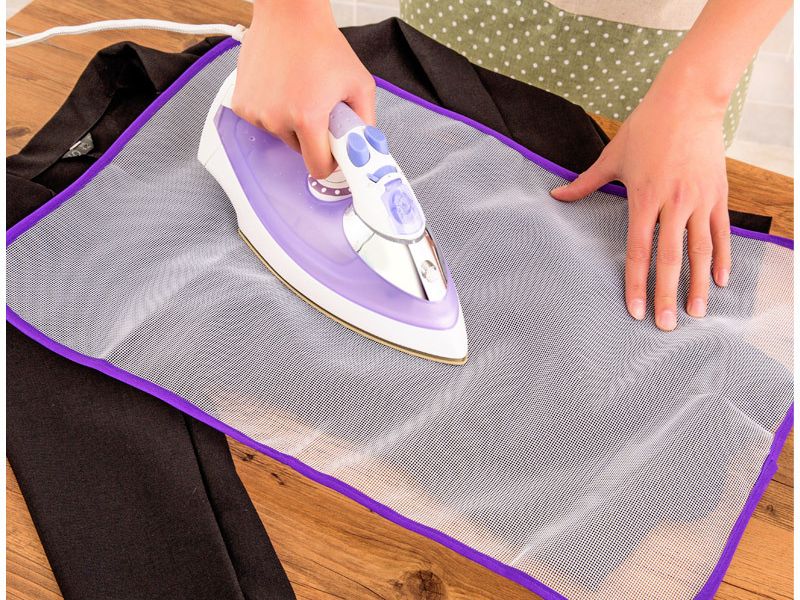
It is advisable to avoid exposing polymer fabrics to detergents or high temperatures in order to maintain their quality and durability.
By providing detailed information about polymer fabric, readers will be able to make smarter and more appropriate choices for fashion products and interior decoration. Polymer fabrics have gained a strong foothold in the fashion industry and continue to offer significant advantages in everyday life. Stay updated with the latest fashion trends and materials on the Fashion Bandung website to ensure you don’t miss out on any new developments!
Welcome to Fashion Bandung – the ultimate destination for fashionable men! At Fashion Bandung, we offer an extensive range of trendy clothing and accessories that are specially curated to cater to the style needs of modern men. Our collection encompasses a diverse selection of apparel, including stylish shirts, fashionable trousers, trendy blazers, and much more. With a keen eye for detail and a deep understanding of the latest fashion trends, our team ensures that every piece in our collection is not only on-point but also of the highest quality. Whether you’re seeking casual attire for everyday wear or attire for a formal occasion, Fashion Bandung has got you covered. Experience the perfect blend of style, comfort, and sophistication with our chic and versatile clothing options. Explore our exceptional range today and elevate your fashion game with Fashion Bandung!
Click on the “See more” button to view additional information.

